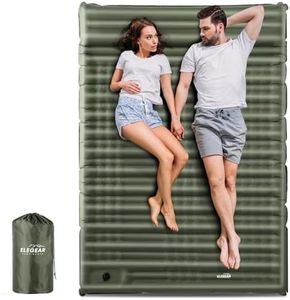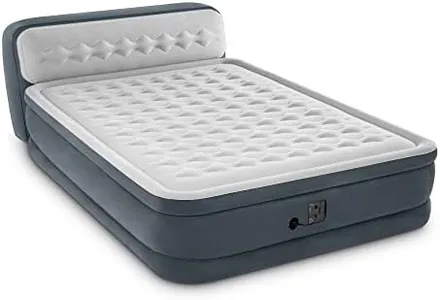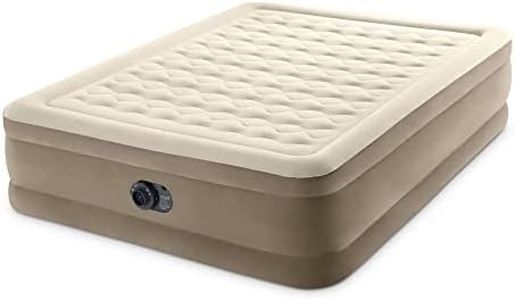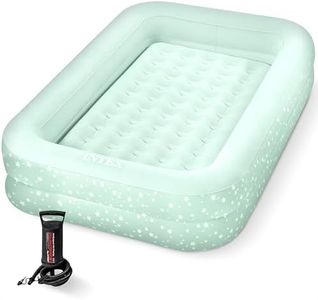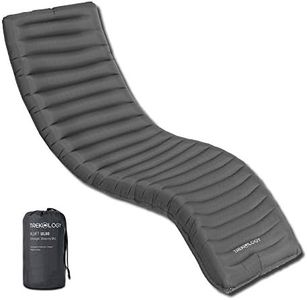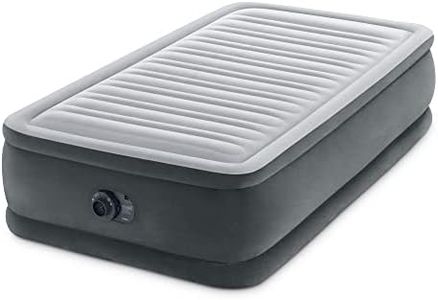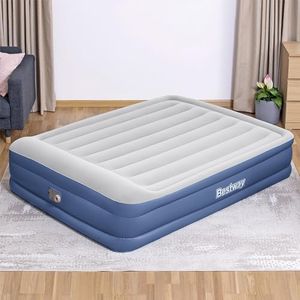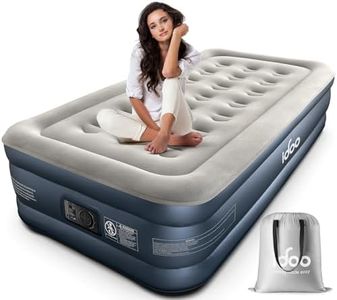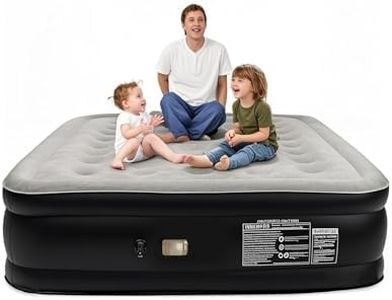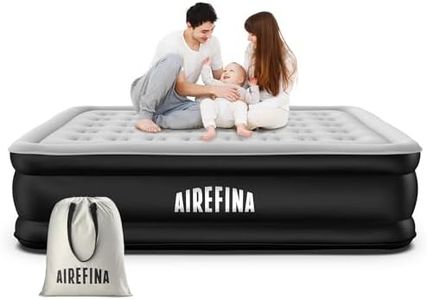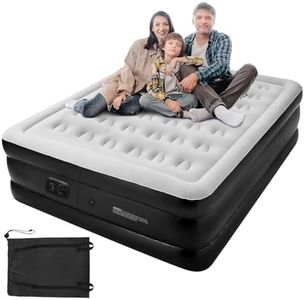We Use CookiesWe use cookies to enhance the security, performance,
functionality and for analytical and promotional activities. By continuing to browse this site you
are agreeing to our privacy policy
10 Best Air Mattresses
From leading brands and best sellers available on the web.Buying Guide for the Best Air Mattresses
Choosing the right air mattress can really improve your sleeping experience, whether it's for guests, camping, or even for temporary home use. To make a good choice, think about how and where you plan to use it, how much space you have, and what level of comfort you need. Understanding the important features and how they fit your specific needs will help you pick the best one for a restful night's sleep.SizeSize refers to the mattress dimensions—typically twin, full, queen, or king. It's important because it determines how many people can sleep on it and whether it will fit in your space. Twins are best for solo sleepers, queen and king sizes are better for couples or if you want extra space. Consider your usual needs (solo/couple/guests) and where you’ll be setting it up, such as a tent, room, or living space. Pick a size that balances comfort with space constraints.
HeightHeight, or the thickness of the inflated mattress, affects comfort and ease of getting on and off the bed. Low-profile air mattresses (under 10 inches) are lightweight and easy to carry, good for camping. Mid-height mattresses (10-15 inches) offer a balance between portability and comfort. High-profile mattresses (over 15 inches) feel more like regular beds and are often best for home use or guests, but can be bulkier. Choose the height based on the importance of comfort versus portability and how you'll use the mattress.
Pump TypePump type determines how you inflate the mattress. There are manual, electric, and built-in pump options. Manual pumps (like foot or hand) are simple and don't need power, but require effort and time. Electric and built-in pumps make inflating and deflating quick and easy, ideal for home use, but need access to electricity. Some models can run off batteries or car adapters for camping. Think about where you’ll use the mattress and how convenient inflating needs to be to decide which pump style works best for you.
Material and DurabilityThe material (often PVC or reinforced fabric) and the construction quality impact how durable, comfortable, and puncture-resistant the mattress will be. Thicker materials and reinforced seams last longer, especially if you’ll use the mattress frequently or outdoors. For camping or frequent travel, durability is key. For occasional indoor use, comfort and feel may matter more. Make sure your choice matches how tough you need the mattress to be.
Weight CapacityWeight capacity tells you the maximum weight the mattress can support safely. Lighter-duty air mattresses may hold 300-400 pounds, while heavy-duty models can support 600 pounds or more. Consider who will use the mattress—adults, kids, one person or more. Always choose a capacity that’s comfortably above your needs to ensure durability and a steady feel during use.
Comfort FeaturesExtra comfort features such as flocked tops, internal air coils, or adjustable firmness can make your sleeping experience better. Flocked tops add softness and prevent slipping, while internal coils or chambers help keep the surface flat and stable. Adjustable firmness lets you control how hard or soft the bed feels. Think about how sensitive you are to sleeping surfaces and what features would make you more comfortable, especially for longer stays.
Portability and StoragePortability and storage refer to how easy the mattress is to deflate, pack up, and carry around. Compact models that come with carry bags are great for camping or if you'll need to move the mattress often. If it will mainly stay in one place, storage might not be as important. Match this with your use: if you'll travel, lightweight and storage-friendly is best; for home use, these might be less critical.


